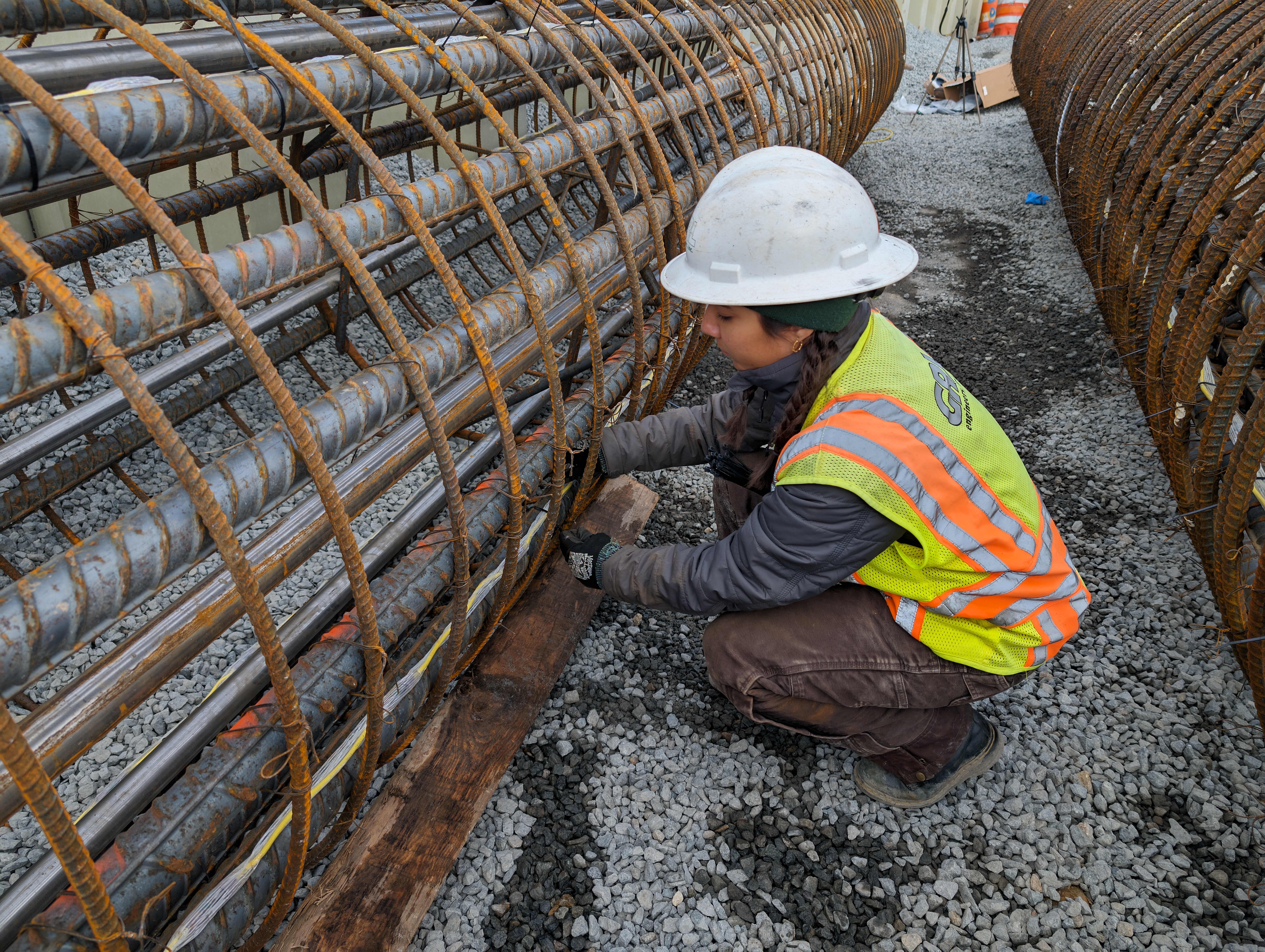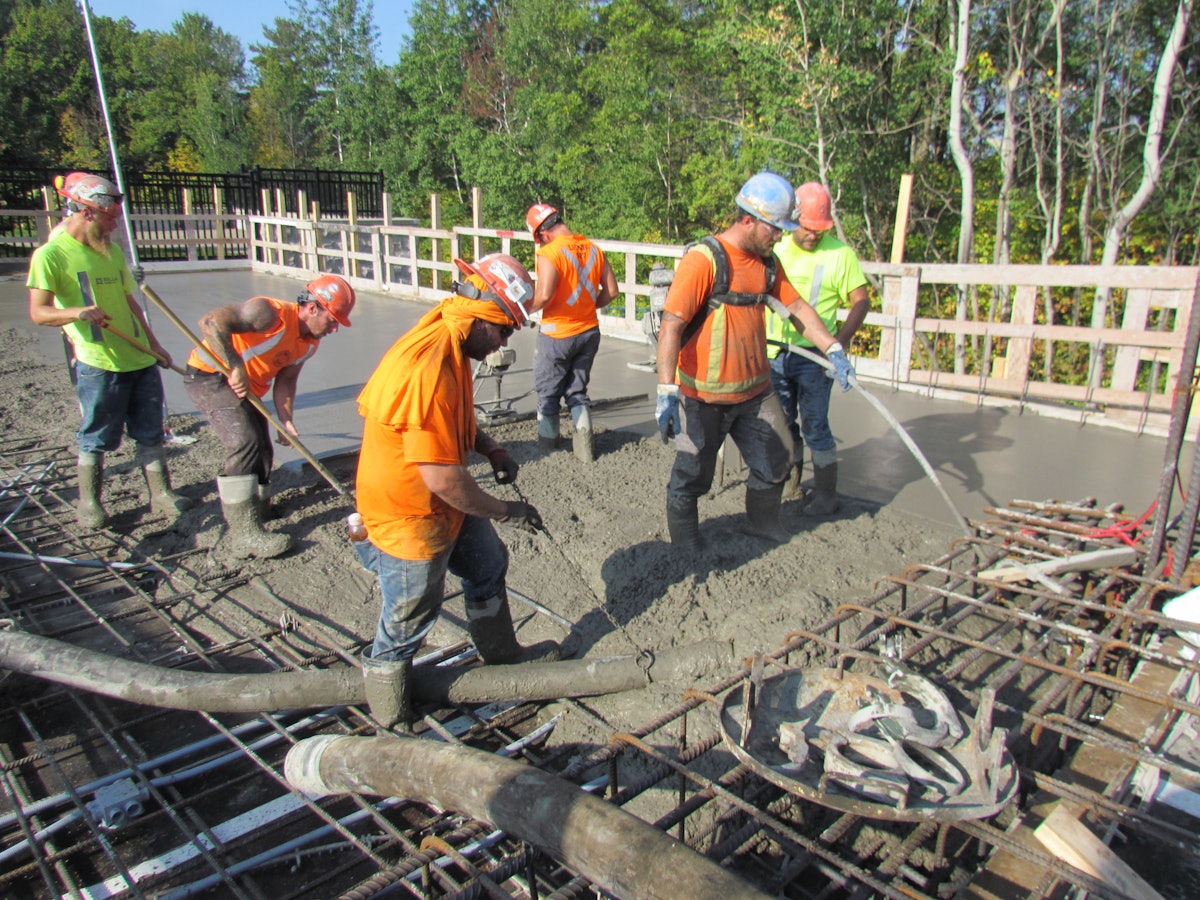The Vital Duty of Concrete Foundation in Structural Honesty and Durability
When it pertains to constructing a home, the foundation is much more vital than you could think. Concrete structures offer unparalleled toughness and longevity, guaranteeing your structure can hold up against numerous ecological obstacles. Without a solid base, you run the risk of potential issues like shifting or breaking, which can endanger safety and value. Recognizing the subtleties of concrete structures might be the trick to maintaining your investment for many years to come. What should you think about following?
Recognizing the Value of Concrete Foundations
Concrete structures are essential to the overall stability of any kind of structure, as they provide the important support required to endure various lots and environmental conditions. When you assume regarding building a home or a business area, the foundation is the initial point you should consider. It acts as a barrier versus wetness, protecting your residential property from water damage. A well-placed concrete foundation also avoids settling and moving, which can cause cracks in walls and floorings. You'll wish to ensure that the foundation is appropriately designed and reinforced, as this influences the durability of your building. Furthermore, a strong foundation can improve energy efficiency by reducing air leakages. Bear in mind, ignoring the importance of a concrete foundation can lead to costly repair work down the line. Investing in a top quality structure upfront is necessary for the stability and longevity of your framework.
Advantages of Concrete Foundations for Structural Stability
While lots of variables add to a structure's architectural integrity, concrete structures provide unequaled longevity and stamina. You'll value that concrete can withstand extreme climate condition, resisting both wetness and temperature level changes. This resilience indicates your structure is less most likely to experience splitting or moving over time, which can endanger its safety.Additionally, concrete's integral weight supplies a strong base, stopping movement throughout natural events like earthquakes or floods. When you choose a concrete foundation, you're likewise choosing reduced maintenance; unlike wood, it will not rot or draw in pests, saving you money and time in repairs.Moreover, concrete's fire resistance offers included security, guaranteeing your structure can withstand heats without considerable damage. On the whole, buying a concrete structure indicates you're prioritizing the long-term stability and stability of your building, making it a sensible choice for any building and construction task.
Usual Sorts Of Concrete Foundations
When it involves developing structures, understanding the typical kinds of concrete structures can help you make educated options for your job. One of the most common kinds consist of slab-on-grade, crawl room, and full cellar foundations.A slab-on-grade structure is an easy, cost-efficient choice, where a thick concrete piece is poured straight on the ground. This kind works well in cozy environments, as it reduces heat loss.Crawl area structures raise the home somewhat above ground, enabling air flow and access to pipes and electric systems. This design can help stop dampness issues.Full cellar foundations supply extra living or storage area while offering superb architectural assistance. They require even more excavation and are commonly utilized in cooler environments to stop frost heave.
Aspects to Consider When Designing a Concrete Structure

Best Practices for Putting Up Concrete Foundations
When you're setting up a concrete foundation, proper website preparation is necessary to guarantee security (West Coast GE Concrete contractors). You'll also require to comprehend reinforcement strategies to improve strength and sturdiness. Finally, do not ignore the treating process, as it plays an essential duty in attaining a strong structure
Website Prep Work Value
Although it might appear uncomplicated, appropriate site prep work is crucial for guaranteeing a solid and resilient concrete foundation. Start by clearing the location of any type of particles, plants, or natural material that could jeopardize the foundation's honesty. Next off, analyze the soil kind and compaction; you might need to excavate or add products to create a steady base. Level the ground to guarantee even weight circulation and prevent working out concerns later. Installing proper water drainage systems is additionally essential to prevent water buildup, which can damage the structure in time. Lastly, define the foundation's dimensions accurately to assist the putting process. By complying with these steps, you'll set the phase for an effective concrete structure that stands the examination of time.
Reinforcement Strategies Clarified
When the website is properly prepared, the following action in assuring a tough concrete structure entails carrying out effective support methods. You must start by utilizing steel rebar, which supplies tensile toughness and aids stop breaking. Lay the rebar in a grid pattern, ensuring it's raised making use of spacers to maintain appropriate coverage. Furthermore, consider making use of cable mesh for additional assistance, particularly in areas based on hefty loads. Do not fail to remember to tie the rebar crossways securely with cord. For bigger foundations, fiber reinforcement can boost longevity, lowering the risk of why not look here shrinkage splits. Constantly comply with neighborhood building regulations and standards to make sure conformity. By applying these reinforcement techniques, you'll greatly improve your foundation's toughness and long life, laying a strong foundation for your structure.
Treating Refine Basics
To guarantee your concrete structure treatments properly, it is necessary to preserve sufficient wetness and temperature level problems instantly after pouring. Beginning by covering the surface with a wet cloth or plastic bed linen to preserve wetness. This maintains the concrete hydrated, preventing fractures and guaranteeing stamina. You must additionally check the temperature level; ideal curing conditions are between 50 ° F and 90 ° F. If it's as well warm, mist the surface frequently to protect against fast dissipation. For winter, think about making use of insulating blankets to preserve heat. Objective for a curing duration of a minimum of seven days, as this is essential for optimal strength growth. By complying with these ideal techniques, you'll improve your foundation's toughness and long life, making decorative concrete installers sure architectural integrity for several years to find.
Upkeep of Concrete Foundations for Durability
To maintain your concrete foundation strong and lasting, normal evaluations are essential. You should likewise guarantee reliable drain services remain in location to protect against water damage. If you spot any type of splits, addressing them quickly will save you from bigger problems down the line.

Normal Examinations and Evaluations
While regular assessments and assessments may feel like a duty, they're crucial for maintaining the integrity of your concrete foundation. By consistently looking for cracks, changes, or indications of wear, you can catch prospective problems prior to they intensify into pricey repair services. Look for any kind of water merging around the structure or unusual settling, as these can signal underlying issues. It's also a good idea to check any modifications in your home's framework, like doors that stick or home windows that do not open smoothly. Keeping a record of your assessments assists track modifications over time, permitting aggressive upkeep. Inevitably, these assessments ensure your structure remains secure, supporting the durability and security of your entire structure. Do not overlook this important facet of homeownership!
Reliable Drain Solutions
Regular evaluations can expose concerns like water drainage problems that may compromise your concrete foundation's security. To prevent water accumulation, guarantee your rain gutters and downspouts direct water away from the structure. Installing French drains pipes can successfully reroute surface area and groundwater, decreasing pressure on your foundation walls. In addition, grading the dirt around your home helps ensure that water flows away, as opposed to pooling near your foundation.Consider using sump pumps in areas prone to flooding, as they proactively get rid of excess water. Frequently check for obstructions in water drainage systems and clear them quickly. You'll protect your structure's stability and long life by taking these positive measures. Keep in mind, effective drain remedies are necessary for preserving a solid, visit homepage durable concrete structure.
Prompt Fracture Services
When you discover splits in your concrete foundation, resolving them immediately is vital for keeping its long life. Little cracks can rapidly develop right into bigger problems, endangering the structural integrity of your home. On a regular basis evaluate your structure for signs of damage, such as horizontal or upright fractures. If you detect any type of, do not wait-- repair them promptly. You can use epoxy injections or concrete patching compounds, which work for sealing splits. Constantly comply with the supplier's guidelines and take into consideration getting in touch with a professional for substantial damage. Bear in mind, prompt repairs not just enhance your foundation's sturdiness however likewise conserve you money over time by stopping a lot more considerable repair services down the line. Stay proactive, and your structure will certainly remain solid and protected.
Attending To Typical Concerns With Concrete Foundations
Concrete structures can deal with numerous problems gradually, making it important to identify and address them immediately. One of one of the most usual problems is fracturing, which can take place due to temperature fluctuations or clearing up dirt. If you observe cracks, it's vital to evaluate their dimension and deepness; small cracks can often be sealed, while bigger ones might require expert evaluation.Water intrusion is an additional significant problem. Excess wetness can bring about mold development and architectural damage. Guarantee proper drainage around your foundation to minimize this danger. Additionally, try to find indications of shifting or bowing walls, as this can suggest underlying issues with your foundation's stability.Regular assessments are essential to catch these issues early. If you spot any type of worrying signs, do not wait to seek advice from a foundation specialist. By staying aggressive, you can maintain the honesty and durability of your concrete foundation, assuring your home remains secure and safe.
Often Asked Inquiries
Exactly How Does Soil Kind Affect Concrete Foundation Efficiency?
Dirt kind considerably influences concrete structure efficiency. If you've got large clay, as an example, it can cause changing and breaking. Sandy dirt could cause resolving. Comprehending your dirt aids ensure a steady structure.
Can Concrete Foundations Be Fixed if Harmed?
Yes, you can fix broken concrete foundations. Depending upon the extent of the damage, strategies like epoxy shot or piece jacking can bring back security. It's best to speak with a specialist for reliable solutions.
What Is the Common Lifespan of a Concrete Structure?
A concrete foundation commonly lasts 30 to 100 years, depending upon variables like soil problems, climate, and upkeep. You'll intend to watch on it to ensure it continues to be healthy throughout its lifespan.
Exist Alternative Materials to Concrete for Foundations?
Yes, there are options to concrete for structures, like steel, hardwood, or perhaps recycled materials. Each option has unique benefits and downsides, so you should consider your project's specific requirements when picking the right material.
How Does Climate Effect Concrete Structure Resilience?
Climate significantly affects concrete structure longevity (West Coast General Engineering industrial concrete Rancho Cucamonga). Severe temperature levels, moisture, and freeze-thaw cycles can deteriorate the material, leading to splits and architectural issues. You must consider regional environment conditions when planning your structure to ensure lasting efficiency